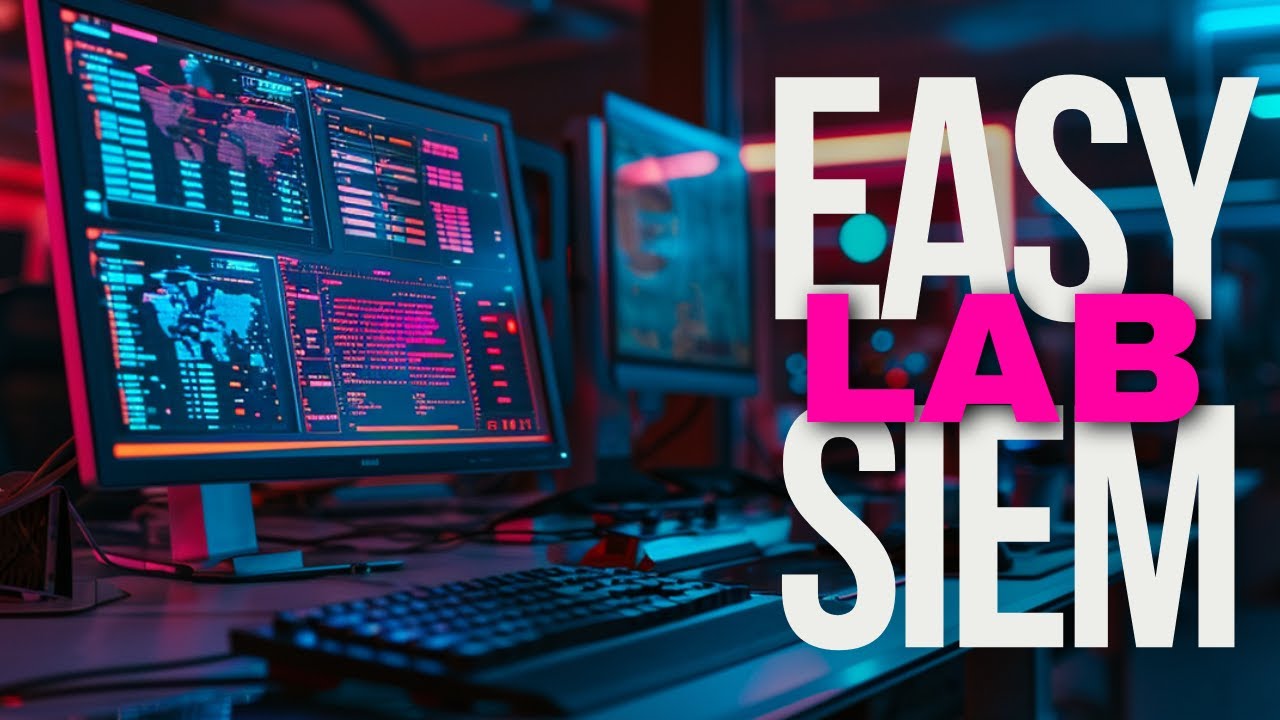AI and the SIEM with Augusto Barros
Summary
TLDRIn this episode of the Security Accelerator podcast, Jason Kirstead discusses the impact of generative AI and LLMs on cybersecurity, particularly in the realm of Security Information and Event Management (SIEM). Augusto Barros, Vice President of Product Marketing at Secuonxs, highlights how LLMs are transforming the role of AI in threat detection and investigation, with a focus on reducing false positives and streamlining incident triage. They also explore challenges such as automating data ingestion, building AI agents, and whether organizations should adopt DIY solutions or rely on mature vendor products for long-term success.
Takeaways
- 😀 AI has been integrated into SIEM (Security Information and Event Management) systems for years, especially in areas like anomaly detection using unsupervised learning techniques.
- 😀 LLMs (Large Language Models) can enhance SIEM systems, particularly in areas like triage and investigation, by automating complex tasks and reducing human workload.
- 😀 The major challenge with LLMs in SIEM is their opacity and potential for hallucination, making it difficult to determine false positives and negatives.
- 😀 Traditional machine learning in SIEM requires structured data and significant feature engineering, while LLMs offer greater flexibility, particularly with unstructured data.
- 😀 LLMs can bridge the gap by helping to transform unstructured data into formats that traditional machine learning algorithms can use effectively.
- 😀 While LLMs could enhance data ingestion and parsing, they might not completely solve the challenges of handling unstructured and complex log data in SIEM systems.
- 😀 The DIY approach to building AI agents and rolling out custom security solutions can be effective for some organizations, but is resource-intensive and challenging to sustain long-term.
- 😀 AI agents have the potential to reduce the operational load on SIEM systems, particularly by automating event triage and reducing the need for manual intervention in detecting malicious activity.
- 😀 Security Data Fabrics (SDF) can complement SIEM systems by providing intelligent data routing and better integration with next-gen AI, though it’s still a question whether SIEM vendors will fully integrate this functionality.
- 😀 Vendors with specialized cybersecurity solutions are likely to have more success than individual organizations trying to build their own solutions due to the need for large datasets and continuous fine-tuning.
- 😀 Organizations with a DIY culture may still opt for building their own agents or security solutions despite the potential long-term costs and challenges, echoing the trend of building custom security data lakes in the past.
Q & A
What role does AI play in traditional Security Information Management (SIM) systems?
-AI has been utilized in SIM systems for anomaly detection, primarily using unsupervised learning methods to identify unusual patterns in data such as unexpected data transfers or authentication attempts. This helps in detecting security threats more efficiently.
What are the challenges with large language models (LLMs) in cyber defense?
-LLMs face several challenges in cyber defense, including their opaque results, the risk of generating hallucinated information, and difficulty in providing definitive answers for false positives or negatives. These models may not always provide clear, reliable outcomes in complex security scenarios.
How can LLMs assist in simplifying security operations?
-LLMs can help reduce the workload of security analysts by automating tasks such as log parsing, event triage, and generating explanations for findings. By automating these mundane tasks, LLMs allow analysts to focus on higher-priority security tasks.
What are some limitations of using LLMs in analyzing complex logs?
-LLMs struggle with analyzing complex, ambiguous logs because they lack the cognitive ability to interpret them in a meaningful way. These models can handle straightforward data, but they require human expertise to deal with nuanced or unclear security logs.
How do AI agents improve security operations in organizations?
-AI agents can automate complex tasks like event triage, making security operations more efficient. These agents assist in parsing findings, automating content generation, and simplifying the analysis process, thereby reducing the workload of security professionals.
What are the challenges in implementing AI agents in security teams?
-The implementation of AI agents requires careful planning, integration, and management. While they can simplify tasks, AI agents still need to be fine-tuned and continuously monitored to ensure effectiveness and reliability in real-world security operations.
What is the significance of a security data fabric (SDF) in cybersecurity?
-A security data fabric (SDF) helps manage and route security data more efficiently. By decoupling the management of detection data from data storage requirements, it can improve the scalability of security systems and optimize computational resources, enhancing overall security operations.
How does a security data fabric (SDF) integrate with traditional SIM systems?
-A security data fabric can sit alongside or in front of SIM systems, acting as an intermediary to optimize data flow. By doing so, it allows SIM systems to focus on detection while the fabric handles the data routing and storage, reducing unnecessary computational load.
What is the potential issue with building custom AI solutions for cybersecurity?
-Building custom AI solutions can be resource-intensive and costly, particularly for smaller organizations. While some companies may be comfortable with a DIY approach, maintaining and scaling these solutions over time can be difficult, making commercially available solutions more viable for most.
Why might some organizations prefer a 'do it yourself' approach to AI solutions in cybersecurity?
-Some organizations have a strong 'do it yourself' culture and prefer building their own solutions rather than purchasing commercial products. They may feel that a custom-built solution fits their specific needs or that they can achieve a more cost-effective result by doing it in-house.
Outlines

This section is available to paid users only. Please upgrade to access this part.
Upgrade NowMindmap

This section is available to paid users only. Please upgrade to access this part.
Upgrade NowKeywords

This section is available to paid users only. Please upgrade to access this part.
Upgrade NowHighlights

This section is available to paid users only. Please upgrade to access this part.
Upgrade NowTranscripts

This section is available to paid users only. Please upgrade to access this part.
Upgrade NowBrowse More Related Video

Uncovering Cyber Threats: EDR vs SIEM Comparison #cybersecurity #cyber #risk #threats #detective

you NEED this cyber security project on your resume

How To Setup ELK | Elastic Agents & Sysmon for Cybersecurity

Build a Powerful Home SIEM Lab Without Hassle! (Step by Step Guide)

Midyear Tech Outlook: Where Industry Activity is Heating Up

Network Security News Summary for Wednesday October 02th, 2024
5.0 / 5 (0 votes)